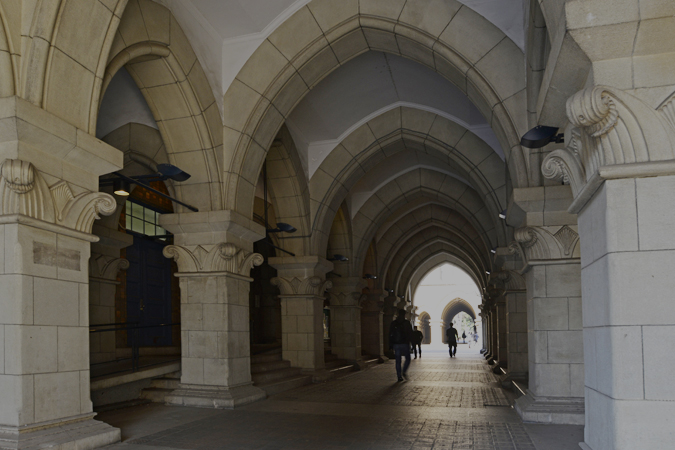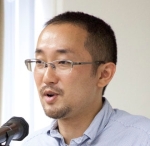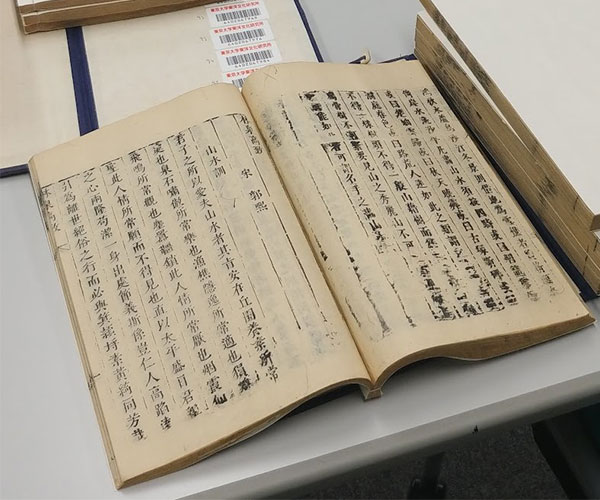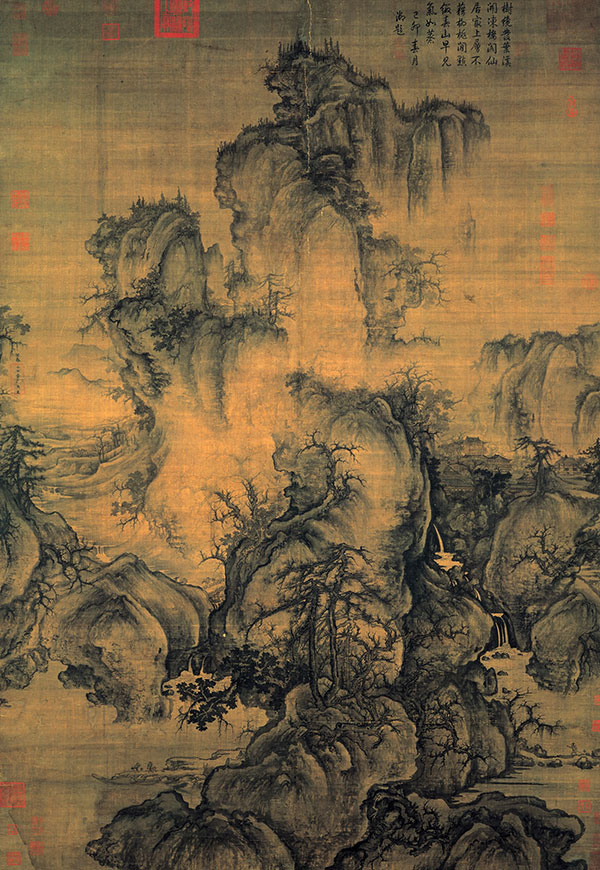When the artist begins to speak
The Linquan Gaozhi: a tale of a painter and his son 1000 years ago

Public Relations Group
Institute for Advanced Studies on Asia
June 26, 2020
Asian Art History
When the artist begins to speak
―― The Linquan Gaozhi: a tale of a painter and his son 1000 years ago ――
A Chinese court painter from the Northern Song period (960–1127) is regarded as being the oldest example of an artist whose words and works remain extant today. How is it that they were able to survive for 1000 years? Part of the reason has to do with the existence of a son with complicated feelings about his artist father. Associate Professor Maromitsu Tsukamoto, well known for his engaging and personable delivery since his days at the Tokyo National Museum, offers a poignant commentary.
 By Maromitsu Tsukamoto
By Maromitsu TsukamotoAssociate Professor, Institute for Advanced Studies on Asia
 Guo Si
Guo SiLinquan Gaozhi
(Wang Shi Shu Hua Yuan [Encyclopaedia of Calligraphy and Painting], a printed edition from the Ming period held by the Institute for Advanced Studies on Asia)
It may not always be so, but time spent enjoying the texture and feel of the paper of centuries-old Chinese classics while reading them in class is a marvelous luxury.
For this year’s seminar (AY 2018), my students and I have been reading a Chinese treatise on painting known as the Linquan Gaozhi (“The Lofty Message of Forests and Streams”). The Linquan Gaozhi is a collection of words of Guo Xi, a court painter of the Northern Song period, that was compiled by his son, Guo Si. The survival of Guo Xi’s masterpiece Zao Chun Tu [Early Spring] (1072, held by the National Palace Museum, Taipei) likely makes him the oldest artist from anywhere in the world whose words and actual works of art are both extant today. While I have personally read the Linquan Gaozhi any number of times since my graduate student days, reading it again now, I have found myself entranced by the appeal of its contents.
Guo Xi moved to the capital to become a court painter late in his life, and the Linquan Gaozhi contains a detailed record of his spoken remarks on the way of art as well as specific instructions on how to paint shan sui (“mountain water”) landscapes. Meanwhile, it was in fact his son whose destiny was forever altered by Guo Xi’s move to the capital, for it was there that Guo Si rose to unexpected prominence as a government official. It is in this context that Guo Si conceived the plan to compile and publish his father’s words. At a time when the concept of the “artist” was yet unknown, the arts placed more emphasis on embellishing the lives of patrons more than the individuality of a given painter. Nevertheless, the figure of his father, Guo Xi, as portrayed in the Linquan Gaozhi represents a complete departure. Guo Si, who as a Northern Song government official had joined the ranks of the cultured classes, clearly describes his father as an educated man of culture.
At the emperor’s decree, Guo Xi had been tasked with painting a vast number of murals on the walls of the newly built palace. The Linquan Gaozhi describes how he received special recognition from the emperor for these magnificent works, and how their creator would spend days in silent contemplation before undertaking a mural, at which point, having prepared himself mentally, he would produce entire paintings in a single burst of creation. The actual Guo Xi would likely have been harried by his workload day in and day out, without the leisure for such introspection. However, Guo Si describes his father’s works over and over as being imbued with spirit, insisting that they are not mere journeyman pieces but rather the “works” of an artist of the highest cultural refinement. Yet for all that Guo Si was proud of his father, he may have had a profound complex about being the son of a mere craftsman. Thus it was that Guo Si portrayed his father Guo Xi (with some embellishment, perhaps) as an ideal cultural figure – a parent worthy of his own career in government officialdom.

Guo Xi
Zao Chun Tu [Early Spring]
Zao Chun Tu [Early Spring]
(Northern Song period, 1072, held by the National Palace Museum, Taipei)
The painters of the Northern Song period abandoned color to start painting with ink alone. This painting represents the pinnacle of these oriental ink-wash paintings, as well as their point of origin. While the original in Taipei is only put on display once every three years, the Institute for Advanced Studies on Asia has a full-scale copy that is available for viewing.
Up to this point, Chinese painters had been artisans, their painting techniques most likely transmitted orally without any written record, so we owe the fortuitous survival of Guo Xi’s words to the fact that he had such a son. What really struck me as we read the text of the Linquan Gaozhi this time was the complicated filial affection of a son who, in addition to the works of his eminent artist father, was attempting to create a written record of his words as well.
The Linquan Gaozhi comprises a mixture of remarks made by Guo Xi himself with annotations by Guo Si, and in our perusal of the Chinese text in the seminar, it was interesting how we gradually began to discern the differences between the two. Finally, I would like to quote a passage that I think most precisely captures Guo Xi’s true thoughts.
— My father, Guo Xi, said, “The Tang poet Du Fu, seeing a landscape painting by the famous shan shui painter Wang Zai, declaimed ‘Ten days to paint one stream! Five days to paint one rock!’ And yet it is exactly thus!”
His father’s protest that one must not be hasty, that one cannot produce good work without putting in the proper time, was surely Guo Xi’s frank and honest meaning, overwhelmingly busy as he was painting enormous murals for the imperial court. The complex affection in these words uttered between parent and child a thousand years ago, together with those works, evoke a deep sympathy even in those of us living in today’s contemporary world.
* This article was originally printed in Tansei 38 (Japanese language only). All information in this article is as of March 2019.
Related Faculty MembersTSUKAMOTO Maromitsu / Professor / Institute for Advanced Studies on Asia
